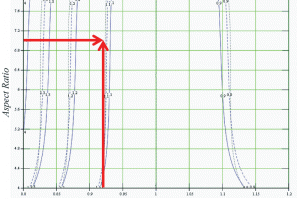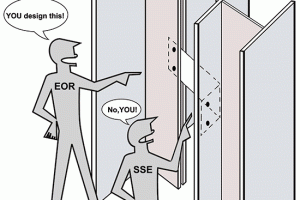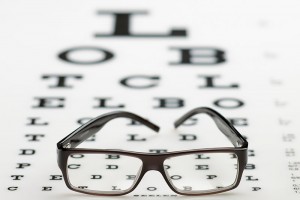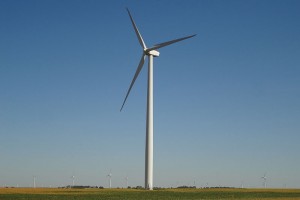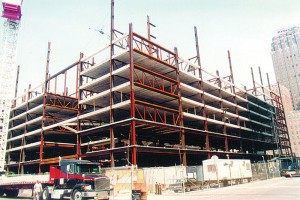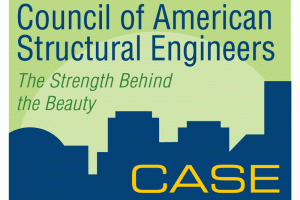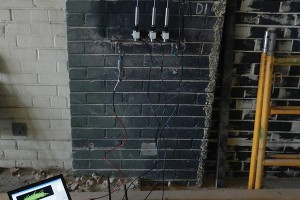The consensus standard Minimum Design Loads for Buildings and Other Structures (ASCE 7) is developed and maintained by the Structural Engineering Institute (SEI) of the American Society of Civil Engineers (ASCE). One of 28 standards currently in development by SEI, ASCE 7 is the most widely used; although the process is similar for all SEI standards, ASCE 7 is unique in many ways. …
Review Category : Articles
Adjusting for Changes in Mass and Stiffness
Structural design of tall buildings is driven by forces of nature, including wind and earthquakes. As buildings get taller, wind-induced dynamic response dictates the design of the lateral system to meet both serviceability and survivability limit states. Structural engineers rely upon wind tunnel consultants to determine equivalent static loads (ESL) and top floor accelerations (TFA). This becomes increasingly important for tall and slender towers where across-wind effects dominate. …
While some of the more complex design, detailing and critical coordination on a building construction project occur at the interface of the structure and the building enclosure, building design teams often consider façade-system attachments as ancillary components of the project. In fact, design, fabrication, and erection of façade systems are often subcontracted out to a specialty contractor, who is part of the construction team. …
Based on the work of Allison Ross and Nafsikas Athanassoulis, I have identified safety, sustainability, and efficiency as “The Internal Goods of Engineering” (March 2013). Based on the work of Gene Moriarty, I have identified objectivity, care, and honesty as “The Moral Virtues of Engineering” (May 2013). However, I have also acknowledged the potential for dissonance among the individual goods or virtues in each list. How is an engineer supposed to harmonize them when that happens? …
Introducing ASCE/AWEA RP2011
In the CASE Business Practices article titled, “Too Many Codes Spoil the Design? Conflicts and Hidden Requirements Can Hurt You!” published in the September 2012 issue of STRUCTURE® magazine, Kirk A. Haverland wrote about a topic familiar to US engineers in the wind energy industry. Mr. Haverland describes the situation where a professional structural engineer “if presented with the opportunity to design a structure that is a little different” hopefully should be able to do his homework and “research the idiosyncrasies of industry practice, design requirements, different codes and standards, etc.” …
As engineers, we have a great deal of black and white in our world. We have been trained to define a problem and come up with a solution. Does a structure have the capacity we need, or not? How do the capacities compare to the imposed loads? We use “engineering judgment” grounded in our knowledge and experience to determine whether a structure is safe; but, even with this information, we are using defined skills. It can be difficult to see that there is also a lot of gray area in engineering. …
UAE DeSimone Consulting Engineers was an Outstanding Award Winner for the Regent Emirate Pearl Hotel project in the 2012 NCSEA Annual Excellence in Structural Engineering awards program (Category – International Structures over $100M).
The iconic Regent Emirates Pearl development will rise and twist 255 meters (840 feet) above its calm turquoise ocean front, claiming its spot in the Abu Dhabi skyline. The mixed-use AED 1.0B ($287M) complex is located amidst palaces and high profile skyscrapers on the Corniche Street of Abu Dhabi in the United Arab Emirates. …
The story of William LeMessurier’s engineering accomplishments was featured in the September 2012 issue of STRUCTURE magazine. The author, Richard G. Weingardt, quoted William Theon, a long-time personal friend and professional partner: “Bill loved teaching as much as engineering and was always at his best with an audience.” This is a chapter in Bill’s productive life not covered in Mr. Weingardt’s article – a time when he was working with students on collaborative projects, often sponsored by industry. …
Many engineering companies are experiencing financial challenges that place an even greater emphasis on the bottom line than normal. Even when times are good, business is brisk, and projects seem to be coming through the door with little effort, it can become easy to lose focus on best business practices, even those that directly affect the bottom line. …
Nondestructive and Minimally Invasive Techniques
In a STRUCTURE® article published earlier this year, the author discussed some of the components of a nondestructive evaluation (NDE) program for existing masonry structures, and what types of information could be obtained through such methods. This article aims to elaborate on the procedures and techniques used to investigate existing masonry structures and diagnose potential issues. …


